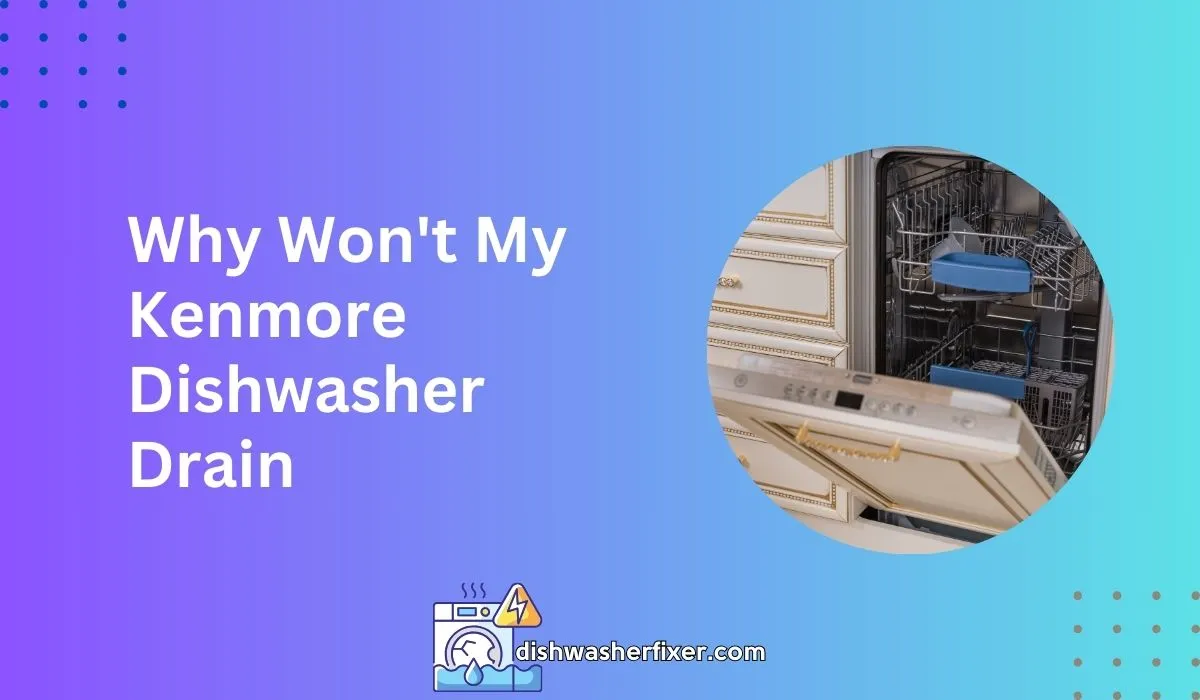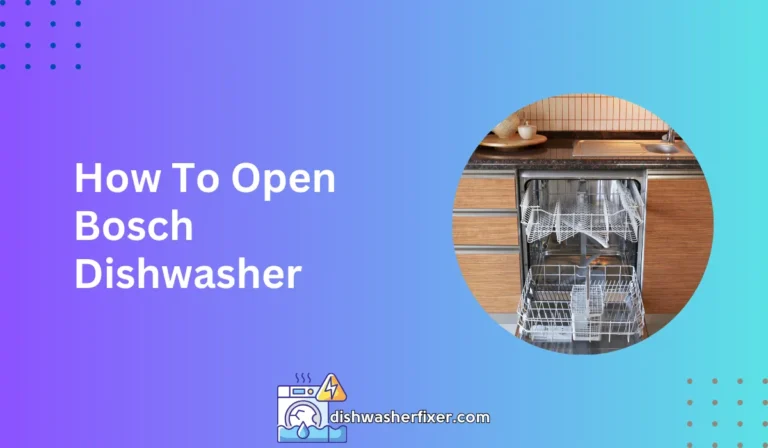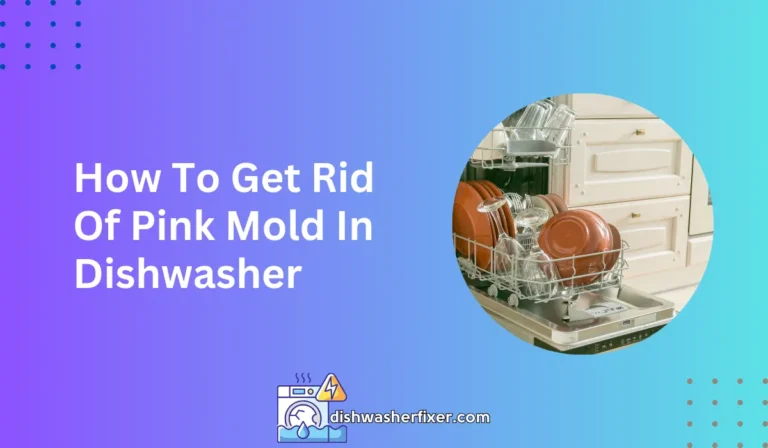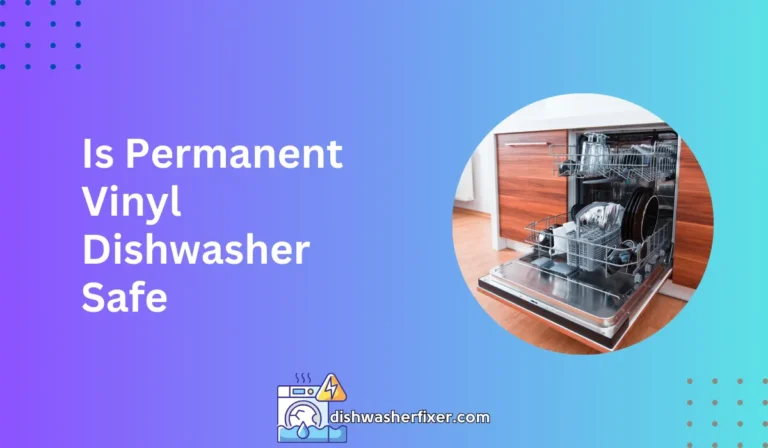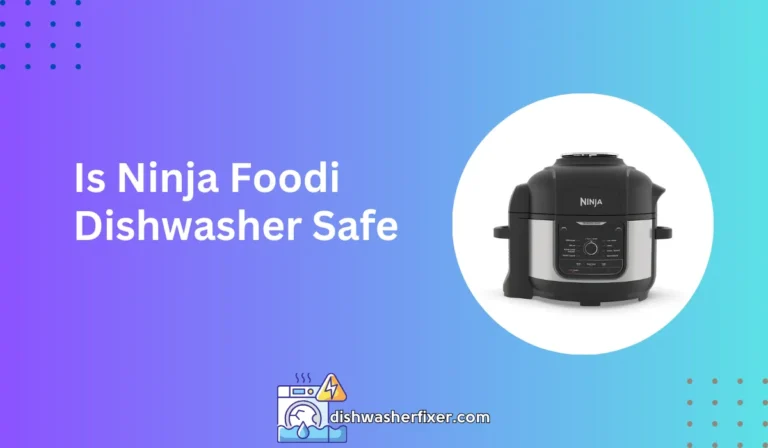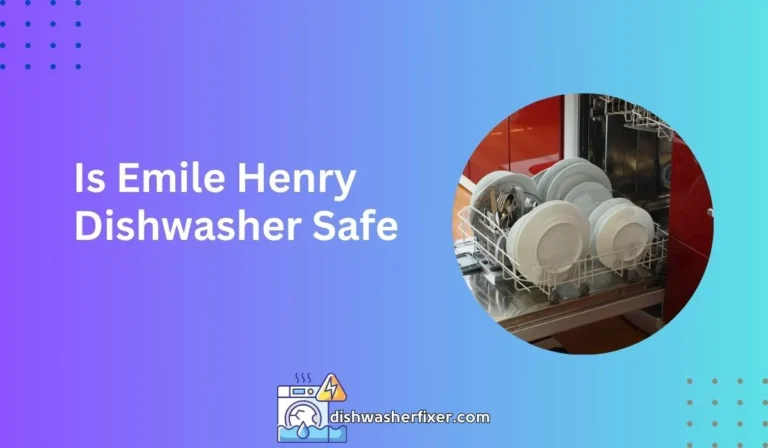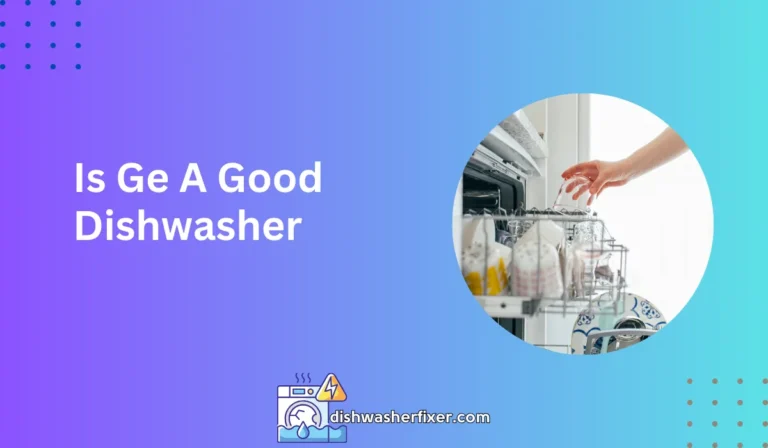Why Won’t My Kenmore Dishwasher Drain? Quick Fixes!
A Kenmore dishwasher may not drain due to a clogged filter, blocked garbage disposal, kinked drain hose, or a faulty drain pump. Check and clean the filter, clear any blockages in the disposal, straighten the hose, and test or replace the pump if necessary.
Common Causes for Kenmore Dishwasher Drainage Problems
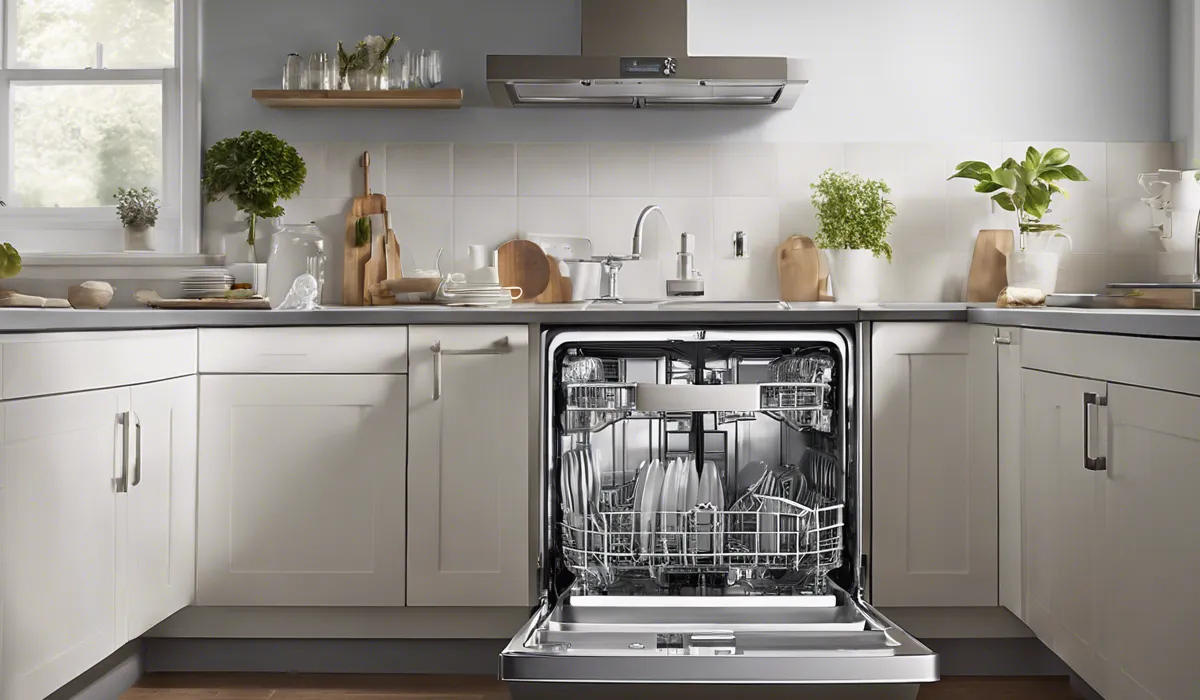
Clogged Drain Hose
One of the most frequent culprits behind a Kenmore dishwasher that won’t drain is a clogged drain hose. Food particles, grease, and other debris can accumulate in the hose over time, causing a blockage.
A clogged hose restricts water flow, preventing your dishwasher from draining properly. It is critical to routinely check and clean the drain hose to ensure it remains clear for the water to pass through freely.
Blocked Garbage Disposal
If your dishwasher drains through the same path as your garbage disposal, it’s possible for the disposal to become blocked, affecting your dishwasher’s ability to drain.
This can happen if the garbage disposal is full or if it has not been run after the sink was used. A simple test to see if your garbage disposal is the cause of drainage issues can save you time and effort in troubleshooting other components.
Faulty Drain Pump
The drain pump is essential for expelling water from the dishwasher. If it malfunctions or breaks, the dishwasher won’t drain as intended.
Drain pump failure can occur due to wear and tear, obstructions, or electrical issues. Testing the pump for continuity using a multimeter can help determine if it is the source of the problem.
Malfunctioning Check Valve
A check valve prevents water from returning to the dishwasher after it has been drained. Should this valve malfunction, it may cause water to flow back into the unit, appearing as if the dishwasher is not draining.
Inspecting and ensuring that the check valve is operating correctly is a vital step in maintaining your dishwasher’s drainage system.
Obstructed Air Gap
An air gap prevents dirty water from siphoning back into the dishwasher. It can be found mounted on the countertop or the sink.
Over time, the air gap can become obstructed with debris, which can lead to drainage problems. Keeping the air gap clean is essential for the proper functioning of your dishwasher.
Filter and Sump Area Blockages
The filter and sump area in a Kenmore dishwasher are designed to catch food particles and other debris.
However, if not cleaned regularly, these can become clogged and impede water flow, causing drainage issues. Regular maintenance is required to prevent blockages in these critical areas.
Drain Solenoid Issues
The drain solenoid is an electromechanical device that opens the drain valve to allow water to exit the dishwasher. If the solenoid fails, the valve might not open, resulting in a dishwasher full of water.
Troubleshooting the drain solenoid involves checking its operation during the drain cycle and replacing it if necessary.
Troubleshooting Steps to Identify Drainage Issues
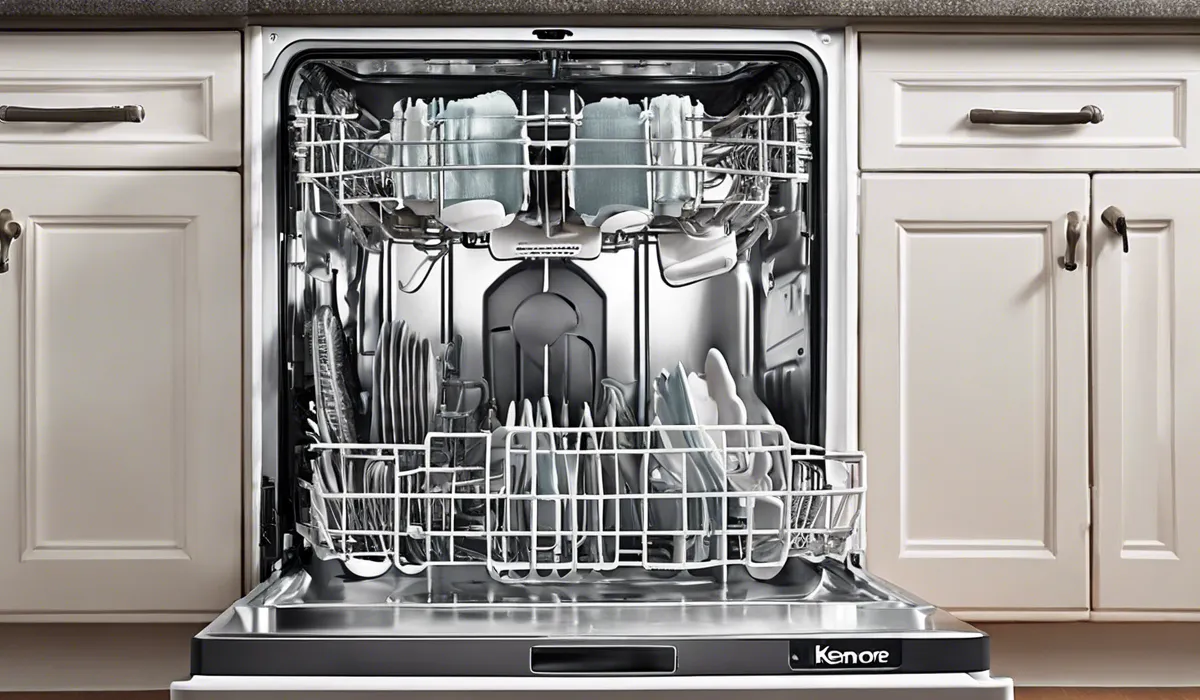
Checking for Obstructions in the Dishwasher
Begin by inspecting the interior of your dishwasher for any visible obstructions.
Large food particles or utensils can block the bottom spray arm or the drain, preventing water from draining out. Remove any foreign objects you find to ensure a clear pathway for water to exit.
Inspecting the Drain Hose for Clogs or Kinks
Examine the drain hose that connects the dishwasher to the garbage disposal or drainpipe. Look for any kinks that could be pinching the hose and obstructing the flow of water.
Additionally, check for clogs by disconnecting the hose and flushing it with water or using a plumber’s snake.
Testing the Garbage Disposal Connection
If your Kenmore dishwasher drains through the garbage disposal, ensure that the disposal is clear and working correctly.
Run the disposal with plenty of water to clear any potential blockages. If the disposal is jammed or has stopped working, it may need to be reset or repaired to restore proper drainage to your dishwasher.
Assessing the Drain Pump Functionality
To check if the drain pump is the issue, listen for a humming sound when the dishwasher is supposed to be draining.
No sound may indicate a faulty pump. You can also use a multimeter to test the pump’s electrical continuity. If the pump is defective, it may need to be replaced by a professional.
Examining the Check Valve for Proper Operation
Locate the check valve and inspect it for any signs of damage or wear. A malfunctioning check valve can cause water to flow back into the dishwasher. If the valve is not functioning correctly, it will need to be cleaned or replaced to ensure proper drainage.
Ensuring the Air Gap is Clear and Functioning
Check the air gap located on the countertop or sink. Remove the cover and clear out any debris that may be causing a blockage.
An unobstructed air gap is necessary to prevent dirty water from re-entering the dishwasher and to maintain proper drainage.
Maintenance Tips and Solutions

Regular Cleaning of the Filter and Sump Area
Regularly remove and clean the filter found at the bottom of the dishwasher. Rinse it under running water and use a soft brush to remove any trapped debris.
Also, clean the sump area around the filter to prevent future blockages and ensure efficient drainage.
Flushing the Drain Hose to Remove Debris
Periodically detach the drain hose and flush it with a high-pressure water stream to remove any buildup inside. This maintenance step prevents clogs and ensures that the hose allows water to flow freely.
Cleaning or Replacing the Check Valve
If the check valve is dirty, clean it thoroughly. If it’s damaged or worn out, it’s best to replace it to prevent future drainage problems.
This simple replacement can be done without the need for a professional if you’re comfortable with minor appliance repair work.
Resetting or Repairing the Garbage Disposal
If your disposal is the cause of your dishwasher’s drainage issues, try resetting it by pressing the reset button typically located on the bottom of the unit.
If the disposal has significant issues, it may need to be repaired or replaced to ensure it doesn’t affect your dishwasher’s performance.
Tips for Proper Dishwasher Loading to Prevent Future Drainage Issues
Proper loading of your dishwasher can help prevent drainage problems. Ensure that dishes do not block the spray arms or the drain.
Avoid overloading and place items so that water can circulate freely. This will keep your dishwasher draining effectively and extend its lifespan.
When to Seek Professional Help for Dishwasher Repair
If you’ve gone through these troubleshooting steps and your dishwasher still won’t drain, it may be time to seek professional help.
A certified technician can diagnose and fix more complex issues that may not be easily resolved at home. Don’t hesitate to contact a professional if you’re unsure about any part of the repair process.
FAQs About Kenmore Dishwasher Drain Issues
Why won’t my Kenmore dishwasher drain?
A Kenmore dishwasher may not drain due to a clogged filter, blockage in the garbage disposal, a kinked drain hose, or a malfunctioning drain pump.
How can I fix a clogged filter in my Kenmore dishwasher?
To fix a clogged filter, you should remove it from the dishwasher, thoroughly clean it with soap and water, and then reinstall it.
What should I do if my garbage disposal is causing my dishwasher not to drain?
If the garbage disposal is causing drainage issues, ensure it’s not clogged or jammed and run it to clear any potential blockages. Make sure the knockout plug has been removed if it’s a new installation.
How do I correct a kinked drain hose on my Kenmore dishwasher?
Straighten the drain hose to remove any kinks and ensure it’s properly positioned without any sharp turns or bends that could cause blockages.
What are the signs of a faulty drain pump in my Kenmore dishwasher, and how do I fix it?
Signs of a faulty drain pump include unusual noises during the drain cycle or water remaining in the dishwasher after a cycle. If the pump is faulty, it may need to be tested with a multimeter and replaced if it’s not functioning properly.
Final Thoughts
A Kenmore dishwasher’s drainage issues often stem from a clogged filter, an obstructed garbage disposal, a twisted drain hose, or a malfunctioning drain pump.
To rectify the problem, inspect and cleanse the filter, ensure the garbage disposal is unblocked, straighten out the hose, and evaluate the drain pump, replacing it if it’s found to be defective.
